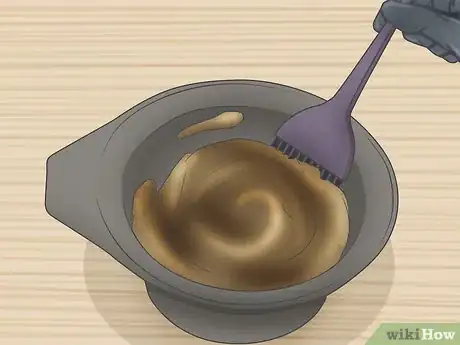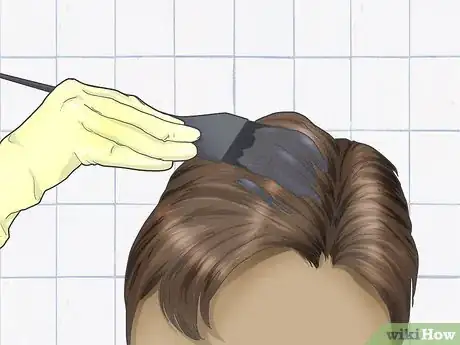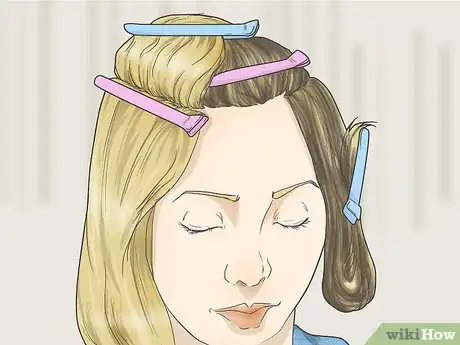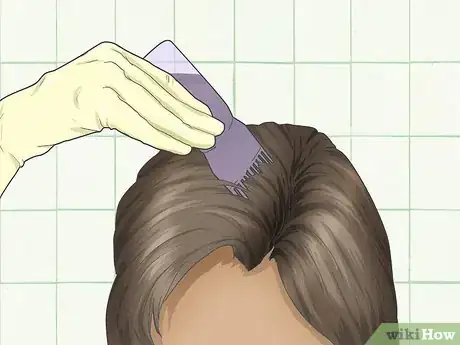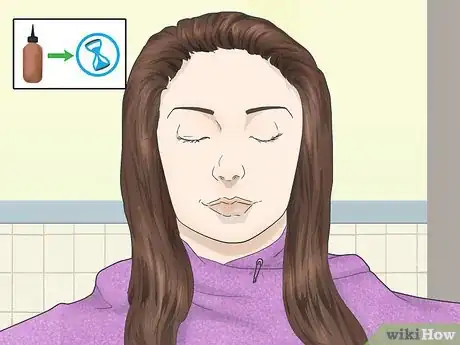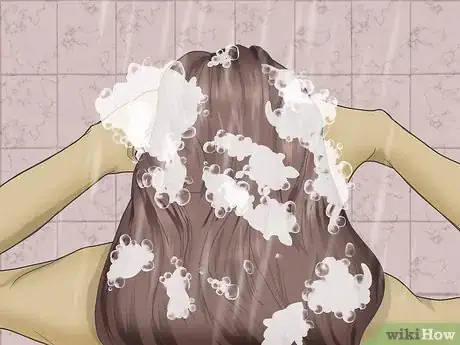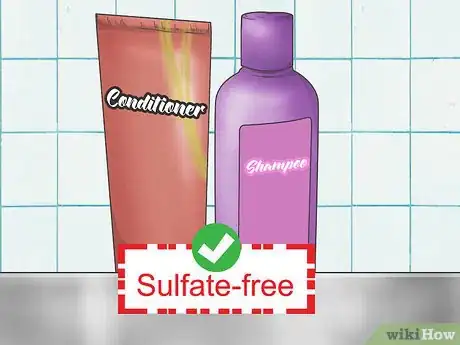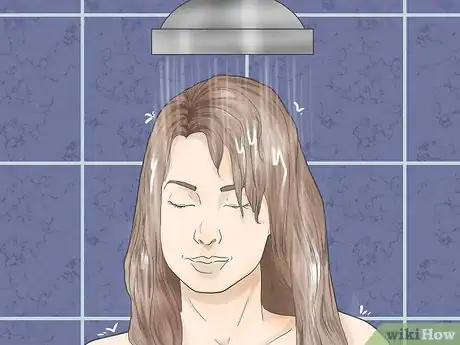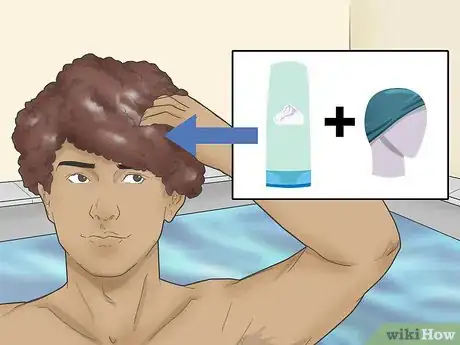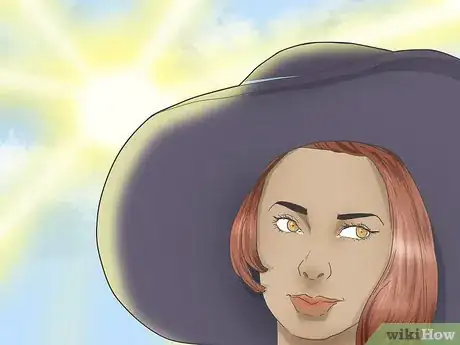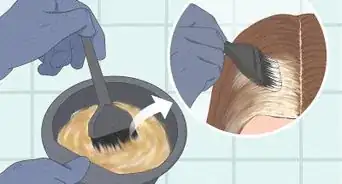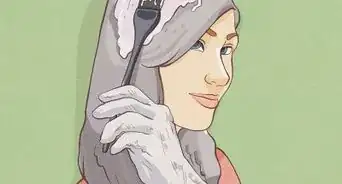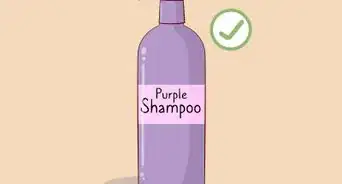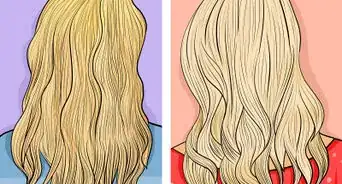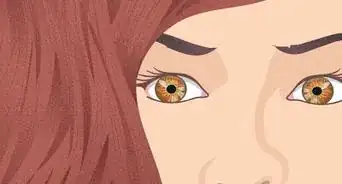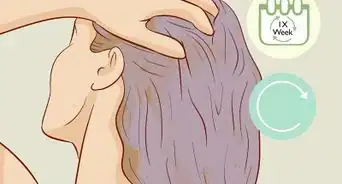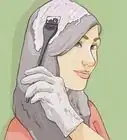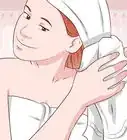X
This article was co-authored by Ashley Adams. Ashley Adams is a Licensed Cosmetologist and Hair Stylist in Illinois. She completed her Cosmetology education at John Amico School of Hair Design in 2016.
There are 9 references cited in this article, which can be found at the bottom of the page.
This article has been viewed 98,666 times.
Coloring your hair with peroxide-based dyes can leave your hair damaged over time. Powdered hair dyes (which are predominantly henna-based) are a harmless and economical alternative. Prep your hair before you dye and take regular care of it afterwards so the color lasts a long time. Remember to read the packaging details for more specific instructions.
Steps
Part 1
Part 1 of 3:
Preparing to Color
-
1Complete a skin allergy test 48 hours beforehand. Although powder hair dye is usually more skin-friendly and chemical-free, some people may experience allergic reactions. If this is your first experience with a certain brand, mix a small amount of the powder with water and apply it to your skin. Once two days have passed without red or irritated skin, you can apply the dye knowing that you are not allergic.[1]
- Common allergy signs may include: intense stinging, skin rash, burning sensations, swelling, or blisters.
- If you notice any allergy symptoms, call a doctor immediately.[2]
- Most powered dyes claim to be free of chemicals, ammonia, metallic salts, and pesticides. There are some that even claim to be 100% vegan.
-
2Put on a pair of rubber or latex gloves. Powder hair dye is safer to touch than peroxide-based dyes, but it is still messy. To avoid staining your hands, don a pair of gloves before you begin. Check to see if your dye package comes with disposable gloves before you purchase.[3]
- Apply the hair dye in your bathroom to avoid staining your carpet and to better see what you’re doing.
Advertisement -
3Pour the powder into a bowl, and add water. Most powder hair dyes will require little more than water. Look at the package's directions to see how much water you'll need to add. Stir the dye thoroughly until the paste is about the consistency of yogurt.[4]
-
4Cover your shoulders with a towel. Dye stains on your neck or shoulders can last for days without lightening. Find an old towel that you don't mind staining and drape it around your neck. Wear old clothes that you don't mind staining, like t-shirts or sweatpants.
Advertisement
Part 2
Part 2 of 3:
Applying the Dye
-
1Apply the mixture to dry hair. Excessive wetness will increase the likelihood of your dye dripping, which can stain your hair or clothes. It may also drip into your eyes, which can be a major irritant. Until you have applied the dye to your hair, keep your hair dry.
- If you get the dye in your eye, rinse it out with room temperature water for 15 minutes. Seek emergency medical attention if your eye becomes severely irritated and the rinsing doesn’t help.
-
2Section your hair. To make sure you don't miss a lock, use a comb to separate your hair into two to four different sections. How many sections you make depends on your hair's thickness. Use cheap salon clips or rubber bands to keep the sections separate.
-
3Apply the dye to your hair with an applicator brush or bottle. Use an applicator brush or an applicator bottle to apply dye to the sections from root to tip. Try to evenly coat your hair in the mixture to avoid dying one part of your hair more than another. Aim to finish applying the hair dye within three to five minutes so all of your hair will finish dying simultaneously.[5]
- After you have finished applying dye to a section, clip it up and out of the way. When you’ve finished application, put a shower cap on to prevent it from dripping onto your skin.
-
4Wait 10-60 minutes. Let the mixture sit while it dyes your hair the intended color. Some mixes may finish in as little as ten minutes, but some may take longer. Leave the dye in for up to one hour depending on your package's instructions.
- Leave permanent mixtures on longer than temporary dyes.
- Set a timer just in case you lose track while waiting.
-
5Wash the dye out with shampoo. Once you're satisfied with the color the mixture has dyed your hair, wash it out. Continue washing your hair until it no longer releases dye into the water. Clean your sink, bathtub, or shower directly afterward to avoid staining your house.[6]
- For your first rinse after dying, you do not have to use conditioner. Shampoo is sufficient.
Advertisement
Part 3
Part 3 of 3:
Taking Care of Your Hair
-
1Use sulfate-free shampoo and conditioners. Powder hair dyes are more vulnerable to fading than peroxide-based mixtures, so look for hair products that are gentle and sulfate-free. You can spot a sulfate-based hair product by the lather. Sulfate-free shampoos and conditioners will lather significantly less. When purchasing shampoos and conditioners, keep an eye out for bottles that have the words “sulfate-free” on them.
-
2Wash your hair only 3-5 days a week. Overwashing your hair can dull the color quickly. Instead of washing your hair every day, wash your hair every other day to protect it from fading. Dry shampoo can be a great color-safe alternatives on days you skip washing your hair.
-
3Shower with gentler water. Scalding hot water will strip the color from your hair quickly, so use cool or warm water instead. Don't put your hair directly under the water unless you're rinsing it out to avoid exposing your hair to harsh water. Consider adding a filter to your showerhead, as minerals like iron and lime can weaken your hair color.[7]
-
4Protect your hair from chlorine when swimming. Chlorine can turn lighter dyed hair greenish and cause darker colors to fade quickly. Before you get in the pool, wet your hair with tap water and apply a small amount of conditioner. This can prevent chlorine from penetrating your hair.[8]
- Let the conditioner soak for at least twenty minutes before swimming.
- Wear a swimming cap for additional protection.
-
5Avoid overexposure to sunlight. UV light can fade or change dyed hair color. When you go outside on sunny days, wear a wide-brimmed hat or a scarf. You can also apply a UV-screening hair spray for added protection.[9]
Advertisement
Expert Q&A
Did you know you can get expert answers for this article?
Unlock expert answers by supporting wikiHow
-
QuestionCan you color your hair with Bigen after a relaxer?
 Laura MartinLaura Martin is a Licensed Cosmetologist in Georgia. She has been a hair stylist since 2007 and a cosmetology teacher since 2013.
Laura MartinLaura Martin is a Licensed Cosmetologist in Georgia. She has been a hair stylist since 2007 and a cosmetology teacher since 2013.
Licensed Cosmetologist
-
QuestionIs Bigen semi-permanent hair color safe?
 Laura MartinLaura Martin is a Licensed Cosmetologist in Georgia. She has been a hair stylist since 2007 and a cosmetology teacher since 2013.
Laura MartinLaura Martin is a Licensed Cosmetologist in Georgia. She has been a hair stylist since 2007 and a cosmetology teacher since 2013.
Licensed Cosmetologist
-
QuestionIs Indigo harmful to hair?
 Laura MartinLaura Martin is a Licensed Cosmetologist in Georgia. She has been a hair stylist since 2007 and a cosmetology teacher since 2013.
Laura MartinLaura Martin is a Licensed Cosmetologist in Georgia. She has been a hair stylist since 2007 and a cosmetology teacher since 2013.
Licensed Cosmetologist
Advertisement
Warnings
- Do not use powder hair dye to color your eyebrows or eyelashes. Doing so can cause severe eye irritation or even blindness.⧼thumbs_response⧽
- Complete the skin allergy test particularly if you have sensitive skin or an extensive history of allergies. Read the ingredients list to spot allergens before you purchase the mixture.⧼thumbs_response⧽
- Do not use more water than is indicated on the package.⧼thumbs_response⧽
Advertisement
Things You'll Need
- Powder hair dye
- Rubber or latex gloves
- Applicator brush or applicator bottle
- Bowl
- Water
- Towel
- Shampoo and conditioner
References
- ↑ http://www.tactics.com/info/learning-to-skateboard
- ↑ https://www.madison-reed.com/blog/all-about-allergies-allergic-reactions-to-hair-color
- ↑ https://detoxinista.com/6-things-you-should-know-before-using-henna-hair-dye/
- ↑ https://www.youtube.com/watch?v=z_IGWNP--zY&vl=en
- ↑ https://www.youtube.com/watch?v=UX5iBgW-YWw
- ↑ https://www.youtube.com/watch?v=qjNOyXW1EAM
- ↑ https://www.allure.com/gallery/how-to-make-hair-color-last-longer
- ↑ http://www.byrdie.com/celebrity-colorist-anival-morales-how-to-care-for-colored-hair-expert-tips-2014/slide4
- ↑ http://www.cosmopolitan.com/uk/beauty-hair/hair/advice/a35539/ways-to-keep-hair-colour-fading-rimmel60/
About This Article
Advertisement


